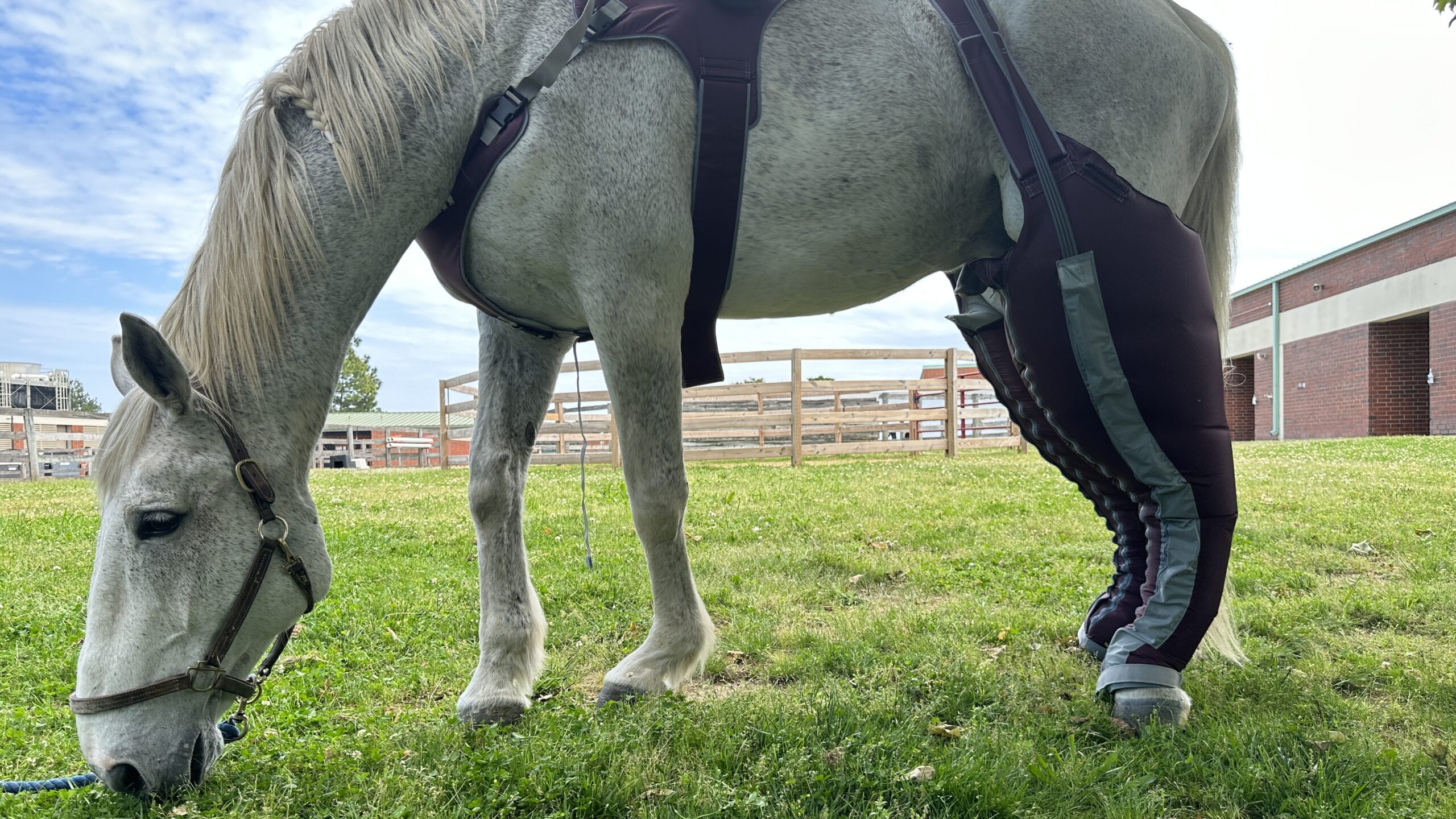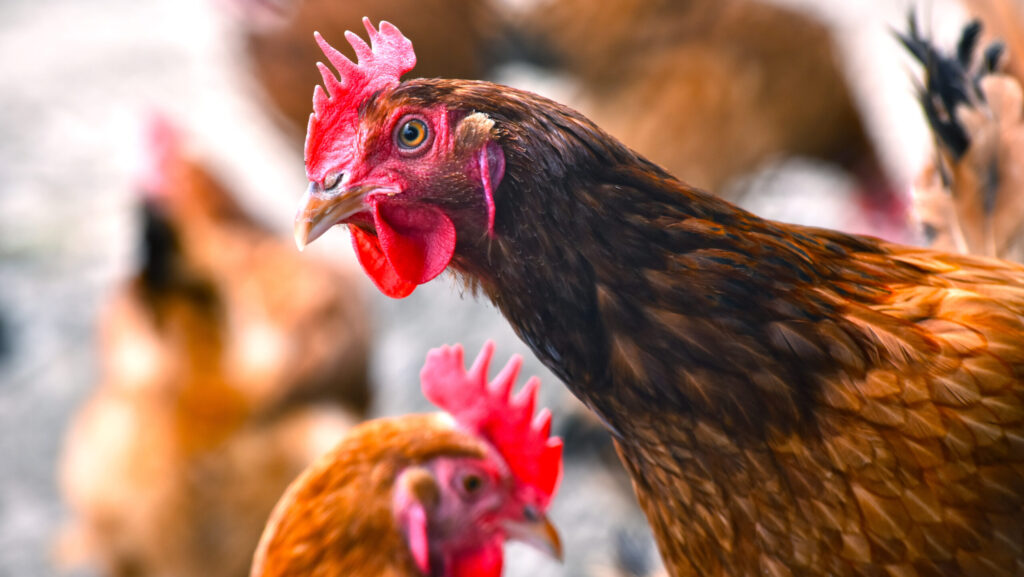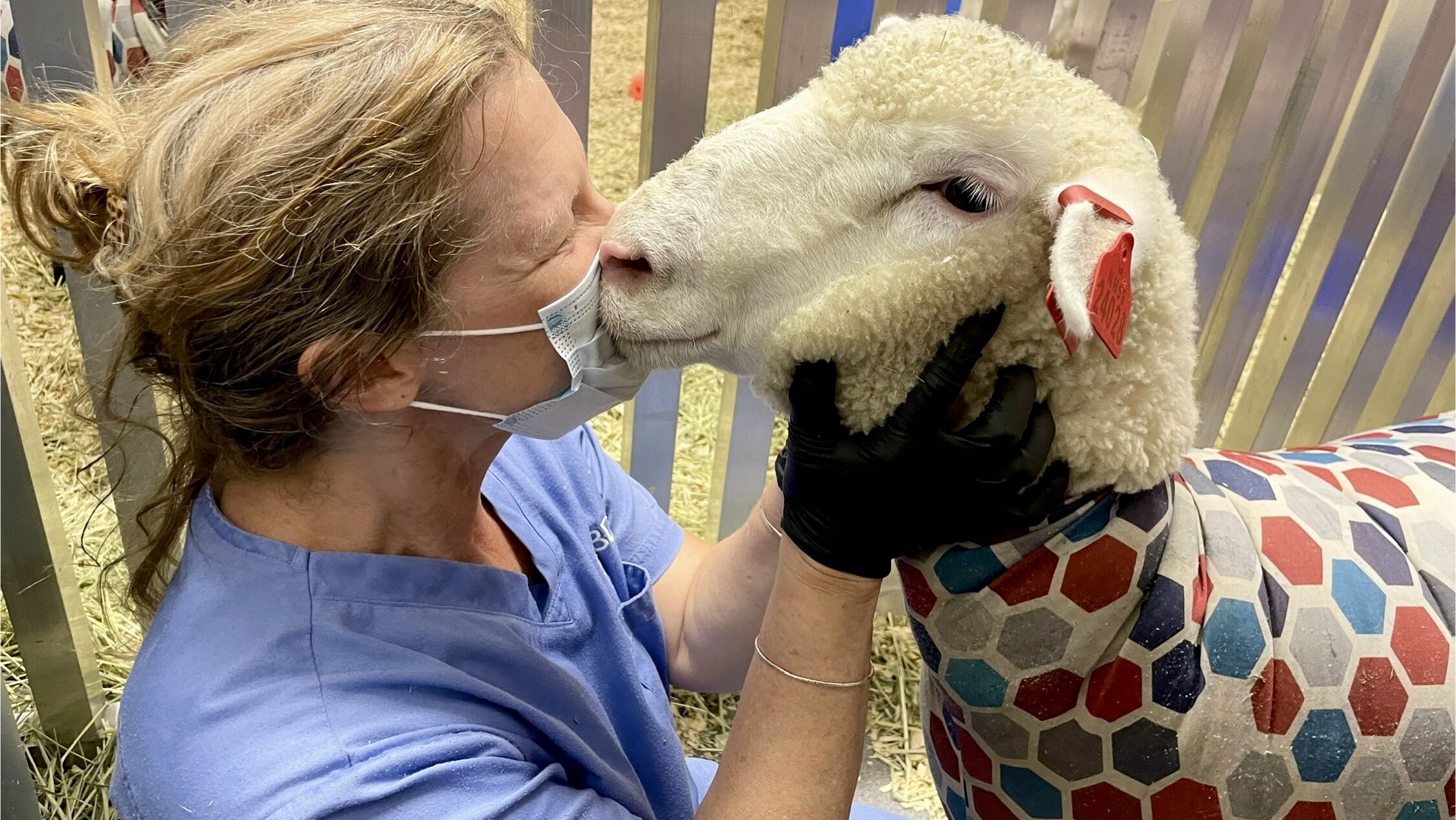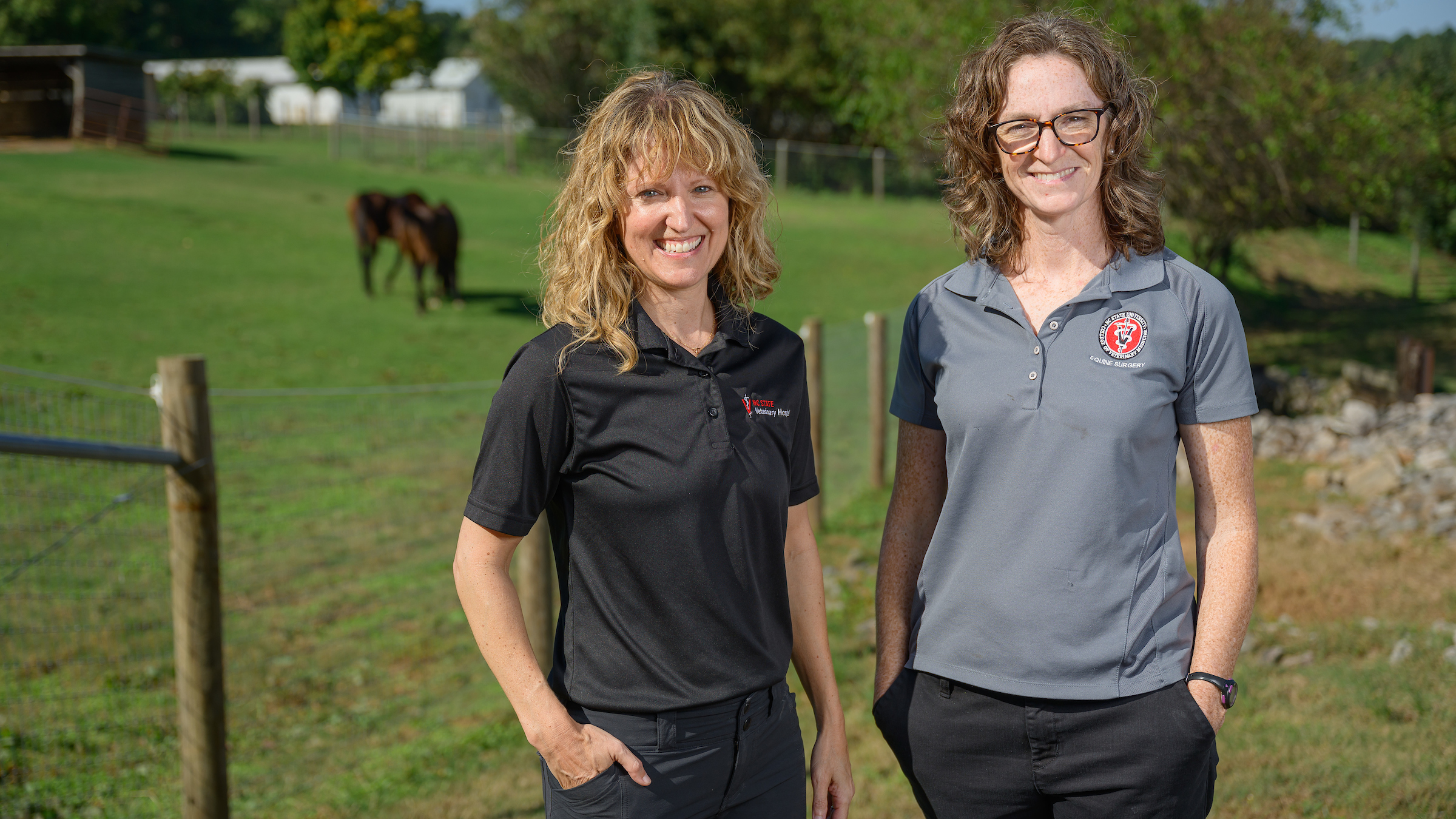Research Retrospective: A Year of Problem-Solving Progress
Throughout 2023, the NC State College of Veterinary Medicine has continued making great strides in improving animal and human health, from looking for better allergy treatments to understanding more deeply what causes cognitive decline. Here’s a look at 10 notable studies.

Allergies: Better Treatments for Anaphylactic Shock
Anyone with a severe allergy knows to take great precautions against their trigger to avoid anaphylaxis, a severe and potentially fatal allergic reaction. Immune cells, called mast cells, are believed to be responsible for driving anaphylaxis in humans. Most commonly, treatment for a severe reaction is an immediate injection of epinephrine and a trip to the emergency room for medical care. Unfortunately, there aren’t many options for long-term treatment to avoid these very scary situations. The treatments that do exist, like immunotherapy, are often time-consuming and not always successful, and they require that a person know his or her trigger. In response to the glaring need for alternative treatments for mast cell-mediated diseases, members of the Cruse Lab based at the NC State College of Veterinary Medicine, conducted a study using a specific type of gene therapy, termed KitStop, to possibly decrease the severity of anaphylaxis by depopulating mast cells in tissues. The results of the study — by Barry A. Hedgespeth, Douglas B. Snider, Katie Bitting and Glenn Cruse — showed that the KitStop treatment did significantly reduce systemic mast cell responses, indicating that KitStop has great potential as an alternative treatment method for patients with a high risk of experiencing anaphylaxis.
Aging: A Deeper Understanding of What Causes Cognitive Decline in Dogs
Aside from the normal changes that come from aging, dogs can also develop Canine Cognitive Dysfunction Syndrome, or CCDS, a disorder that can cause disorientation, changes to social interactions, changes in activity, worsening memory, deficiency in learning and increased anxiety. Studies in canine cognition have shown that older dogs tend to perform worse than younger dogs in tasks involving attention and learning. However, most of the data we have was gathered through owner questionnaires and their own observations. Researchers can use this to subjectively quantify the behavioral changes, but it is clinically important to address the underlying causes. Therefore, a team of researchers — Michael Khan, Alejandra Mondino, Katharine Russell, Beth Case, Gilad Fefer, Hope Woods, Natasha Olby and Margaret Gruen — from our Department of Clinical Sciences organized a study to evaluate a dog’s engagement with an impossible task as a measure of motivation to fulfill it. By assessing the overall engagement with the task, the team observed parallels with other cognitive tests and owner questionnaires about their pet’s cognitive function, getting researchers closer to understanding the etiology behind CCDS.

Lymphedema: How the EQ Press Helps Ailing Horses
Limb lymphedema, caused by poor lymphatic drainage, can be debilitating and painful for both humans and horses. Pneumatic compression therapy has proven to be very beneficial for people struggling with lymphedema. This treatment uses devices that fit like sleeves around the lower leg and pumps that inflate and deflate every so often, which helps increase blood flow. In an effort to improve treatments for horses, researchers from our Departments of Clinical Sciences and Molecular Biomedical Sciences — Drew Koch, Lauren Schnabel, Justin Reynolds and Clifford R. Berry — studied whether a new equine-specific pneumatic compression device similar to the device in human medicine would help the lymphatic flow of healthy horse forelimbs. The results confirmed that the device, termed the EQ Press, did enhance lymphatic flow in the forelimbs of healthy horses. These encouraging results warrant further study of the EQ Press in horses clinically afflicted by lymphedema and other lymphatic drainage disorders.
Forensics: A Basis for Using Household Dust as an Investigative Tool
Dust is often thought of as a nuisance in our households, but to crime-scene investigators, dust could hold key evidence. Often overlooked by perpetrators, dust build-up on household surfaces usually contains enough human DNA for analysis, specifically of single nucleotide polymorphisms, or SNPs. SNPs are important because they are sites within the genome that vary between individuals, and being able to identify whether DNA belongs to household occupants or perpetrators could be immensely helpful to an investigation. That’s why a recent study, including Kelly Meiklejohn, Melissa Schieble and Laura Boggs, looked at whether the software FastID could detect both known and unknown occupant SNPs in dust samples. The results of this study showed FastID is effective for detecting both known and unknown occupants. Further research is warranted to address how much time it takes for non-occupants to be detected in dust.
Journal of Forensic Sciences or NC State News Release

Viruses: A Potential Treatment for a Devastating Porcine Syndrome
Porcine Reproductive and Respiratory Syndrome is a tremendously devastating disease whose spread can have a severe impact on the swine industry worldwide. Right now, scientists’ methods of controlling and preventing the spread of the virus rely solely on biosafety measures and vaccinations. However, due to the high mutation rate of the virus, vaccines are only partially effective against newly emerging strains. In order to reduce the spread and burden of this disease, a team of researchers that included Dr. Elisa Crisci and graduate student Alba Frias-De-Diego, studied the in vitro antiviral effect of a novel platelet-rich plasma-derived biologic termed BIO-PLYTM. The results of the study, published in Viruses, showed that BIO-PLYTM significantly reduces the amount of viral load and the number of infectious viral particles in infected swine. Additionally, the study also shows exciting data on the effect of BIO-PLYTM on other RNA viruses such as human A influenza viruses and coronavirus.
Sound: Understanding Whale’s Nasal Structure and How They Communicate
Beaked whales have specialized nasal structures that include the melon, a mass of fatty tissue found in the very recognizable forehead of all toothed whales. The melon helps whales produce and focus vocalizations, playing an important role in communication and echolocation. But although the nasal structure of whales is so critical, there is almost no literature on the nasal structure or melon of the Gervais Beaked Whale, a species found mainly in the western North Atlantic. In a recent study, a team of researchers including NC State College of Veterinary Medicine’s Craig Harms and Nathan Nelson studied several dissection and imaging techniques to better define the 3D overall shape of the melon and the rostral muscles of the Gervais’ beaked whale. Knowing more about the nasal structures of these whales helps researchers better understand how the animals use their specific anatomy to communicate with one another, which is especially important when feeding and traveling.

Probiotics: Progress on a Preventative Health Measure in Vulnerable Shelter Kittens
Diarrhea is the second most common cause of mortality in shelter kittens, but there is unfortunately not a great deal of research published on prevention to help shelters protect their kittens from the pathogens that cause diarrhea. Probiotics are a common way in humans to aid in proper digestion and keep the gut healthy; however, studies of probiotic benefits in cats have so far involved only healthy adult cats, never sheltered kittens. This study, coauthored by Dr. Jody Gookin, observed whether administering kitten-origin Enterococcus hirae to weaned fostered shelter kittens could provide a measurable preventative health benefit. The team previously identified E. hirae as a bacterial species colonizing the small intestinal mucosa in healthy shelter kittens. Though more research is necessary, the results of this study show promise that the use of E. hirae could be a reliable method of diarrhea prevention in vulnerable young shelter kittens.
Frontiers in Veterinary Science
Stem Cells: The Role of Proper Storage of Equine Tissue
Equine intestinal epithelial stem cells, or ISCs, can potentially be used to treat horses with severe intestinal injury, as ISCs taken from intestinal biopsies would allow researchers to study their dynamic in a variety of intestinal diseases and use these cells as a possible therapy. Proper storage of these biopsies is crucial in successfully processing and isolating ISCs; however, effects of delayed culture on these cells after a prolonged sample storage has not been thoroughly observed. In this study, conducted by members of the Intestinal Regenerative Medicine Lab at NC State College of Veterinary Medicine, researchers found equine ISCs can be isolated and cultured after prolonged tissue storage. Their findings suggest that ISCs could be isolated for several days from samples properly stored after procedures and can then be used for study or therapy of equine intestinal diseases.
Milk: Relieving Pain in Cows While Ensuring Consumer Safety
Lameness is one of the top animal welfare concerns for stakeholders in the dairy industry, but there currently are very limited numbers of drugs labeled to relieve pain in cattle. Additionally, the drug approval process for cattle in the United States requires establishing safe waiting periods prior to selling food products, like meat or milk, from treated cows to protect the health of consumers. Aiming to address both concerns, researchers at NC State’s Food Animal Residue Avoidance Databank (FARAD) program at the College of Veterinary Medicine completed a study demonstrating that cows treated with meloxicam and gabapentin — two drugs that have been shown to alleviate pain in cattle — require only a short three-to-five day withdrawal time that should not result in harmful residues in milk. This information is critical to identifying and approving drugs that are effective for managing pain in cattle, as well as supporting dairy farmers and veterinarians in protecting our nation’s food supply.
Journal of the American Veterinary Medical Association

Farming: How Wind Speed and Landscape Affect Disease Spread in Poultry
In recent years, there has been an emphasis on raising farm animals without the use of antibiotics and in rotational pastures, with the goal of reducing human disease and improving animal welfare. However, with animals spending more time outside in pastures, there is a new need to research how environmental and farm management factors can impact the introduction and spread of pathogens like Campylobacter, the largest single contributor to foodborne illness in the United States. To address this, a team of researchers, including our Department of Population Health and Pathobiology’s Dr. Rocio Crespo, surveyed the prevalence of Campylobacter in 62 flocks in rotational pastures over a three-year period. The results of the study suggested that farms located in areas that usually have higher wind speeds and farms located in highly agricultural areas are at greater risk of Campylobacter being introduced into their flocks. The research shows that as farming practices change and evolve to improve animal welfare, there also needs to be an emphasis on new ways to manage infectious disease in poultry to protect the health of both animals and humans.
- Categories:


